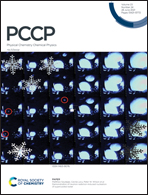Many-electron dynamics in laser-driven molecules: wavefunction theory vs. density functional theory
Abstract
With recent experimental advances in laser-driven electron dynamics in polyatomic molecules, the need arises for their reliable theoretical modelling. Among efficient, yet fairly accurate methods for many-electron dynamics are Time-Dependent Configuration Interaction Singles (TD-CIS) (a Wave Function Theory (WFT) method), and Real-Time Time-Dependent Density Functional Theory (RT-TD-DFT), respectively. Here we compare TD-CIS combined with extended Atomic Orbital (AO) bases, TD-CIS/AO, with RT-TD-DFT in a grid representation of the Kohn–Sham orbitals, RT-TD-DFT/Grid. Possible ionization losses are treated by complex absorbing potentials in energy space (for TD-CIS/AO) or real space (for RT-TD-DFT), respectively. The comparison is made for two test cases: (i) state-to-state transitions using resonant lasers (π-pulses), i.e., bound electron motion, and (ii) large-amplitude electron motion leading to High Harmonic Generation (HHG). Test systems are a H2 molecule and cis- and trans-1,2-dichlorethene, C2H2Cl2, (DCE). From time-dependent electronic energies, dipole moments and from HHG spectra, the following observations are made: first, for bound state-to-state transitions enforced by π-pulses, TD-CIS nicely accounts for the expected population inversion in contrast to RT-TD-DFT, in agreement with earlier findings. Secondly, when using laser pulses under non-resonant conditions, dipole moments and lower harmonics in HHG spectra are obtained by TD-CIS/AO which are in good agreement with those obtained with RT-TD-DFT/Grid. Deviations become larger for higher harmonics and at low laser intensities, i.e., for low-intensity HHG signals. We also carefully test effects of basis sets for TD-CIS/AO and grid size for RT-TD-DFT/Grid, different exchange–correlation functionals in RT-TD-DFT, and absorbing boundaries. Finally, for the present examples, TD-CIS/AO is observed to be at least an order of magnitude more computationally efficient than RT-TD-DFT/Grid.



 Please wait while we load your content...
Please wait while we load your content...